The following is a guest post by Dylan Rodgers, an undergraduate student at Cornell University studying Environment and Sustainability. He is concentrating in aquaponics, which combines aquaculture (raising fish) and hydroponics (growing plants without soil) in a nearly closed loop system. In his spare time, he enjoys spending time outside, caring for his plants and pet fish, and cooking/baking with his friends. Dylan spent this last summer exploring the intersection of Physalis gene-editing improvement and aquaponics in greenhouses.
Cornell University studying Environment and Sustainability. He is concentrating in aquaponics, which combines aquaculture (raising fish) and hydroponics (growing plants without soil) in a nearly closed loop system. In his spare time, he enjoys spending time outside, caring for his plants and pet fish, and cooking/baking with his friends. Dylan spent this last summer exploring the intersection of Physalis gene-editing improvement and aquaponics in greenhouses.
Intersection of Physalis Improvement and Aquaponics
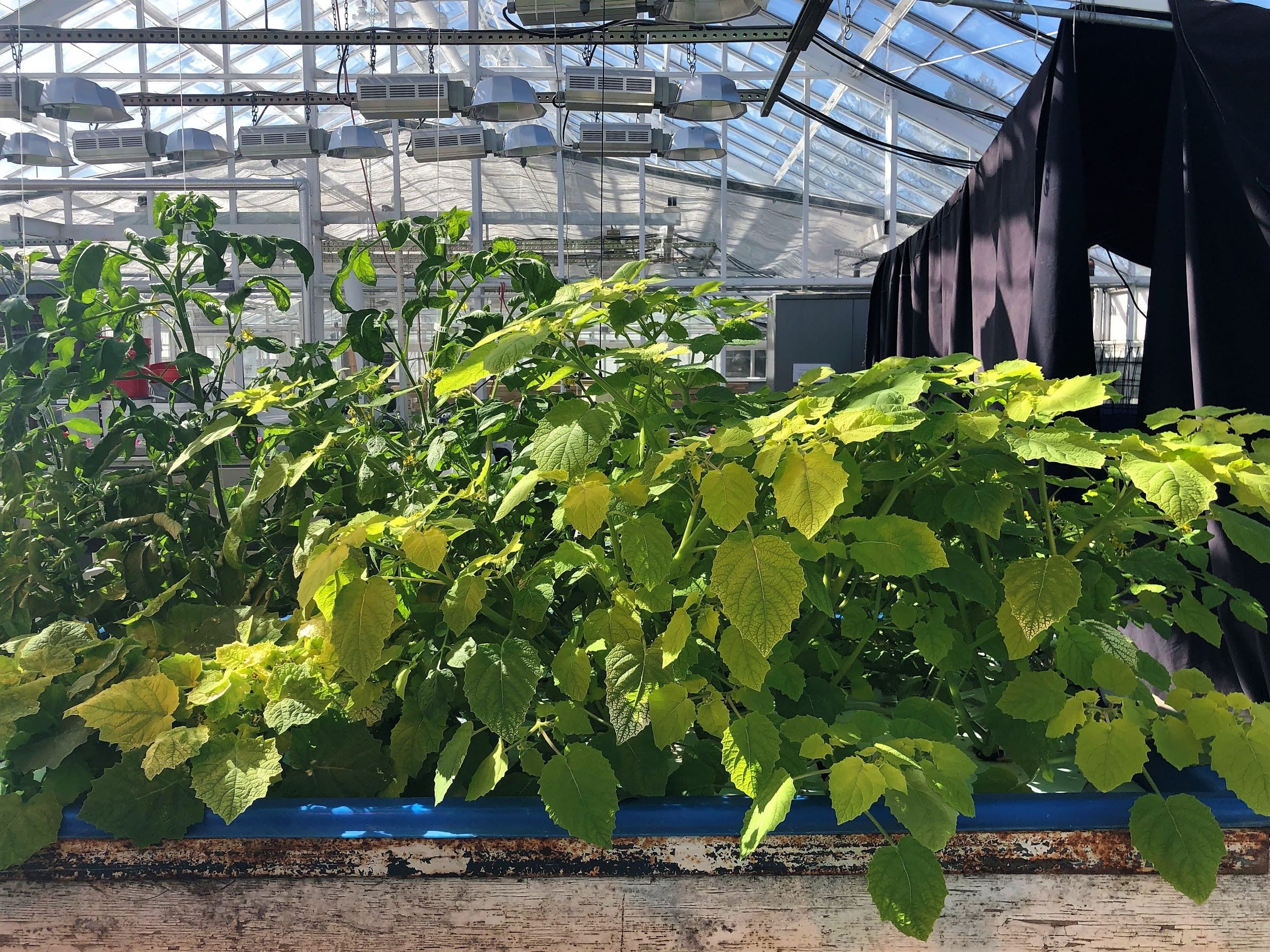
Physalis plants in an aquaponics system
Greetings and Happy New Year! Upon coming to Cornell, I first heard about groundcherries (Physalis), and gene-editing plants for that matter, when Dr. Van Eck gave a guest lecture in my Sustainable Agriculture class Freshman year. I had also just started researching aquaponics in the Timmons Lab at the greenhouses down the street from the Boyce Thompson Institute (BTI). Space and labor are both limiting factors in greenhouse production, so learning about the potential for a compact specialty crop that fruits continuously immediately sparked my interest in the intersection of these two fields of research.
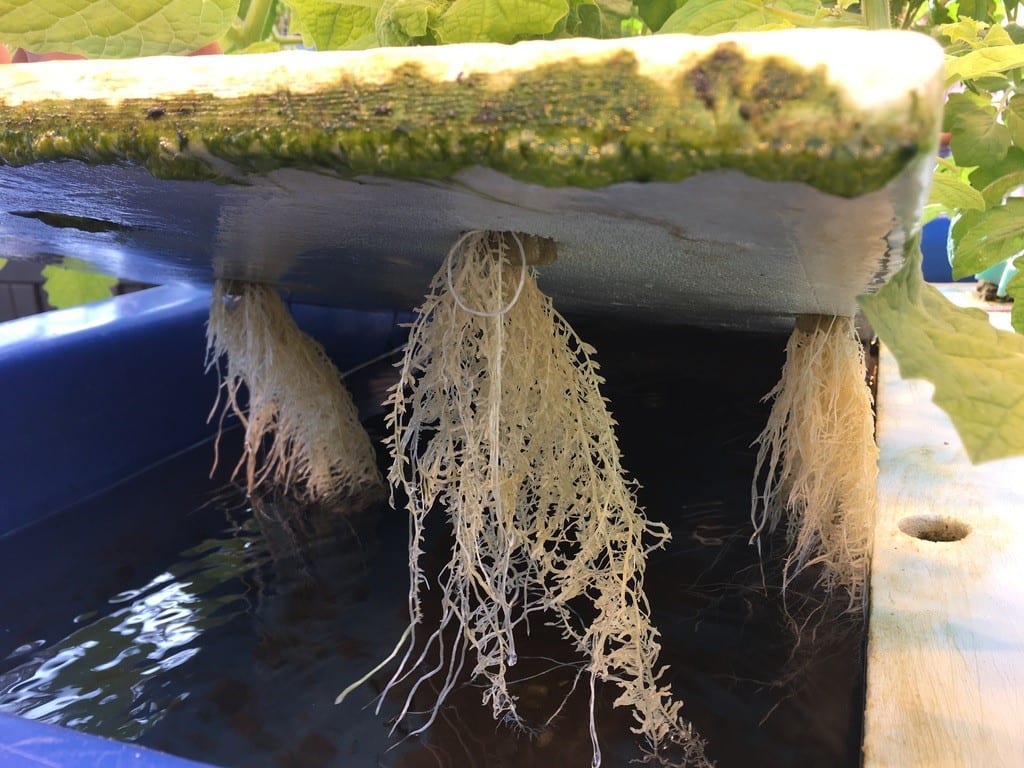
Physalis roots and underside of hydroponics system
Aquaponics uses nutrients from fish effluent to fertilize plants grown hydroponically as the water cycles between the fish and plant systems. Hydroponics is any type of soil-less production, and for my groundcherry experiment, the seedlings were grown on floating rafts with their roots hanging into a basin filled with the water pumped from the fish system. After the plants take up water and the nutrients they need, the water is returned to the fish system a little bit cleaner!
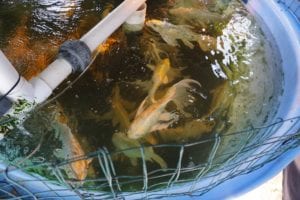
Fish in the aquaponic system
Consulting with Dr. Van Eck and Dr. Timmons, I designed an experiment to test two things: wild-type (WT) vs. gene-edited Physalis, and soil vs. aquaponics systems. The gene-editing aimed to produce more compact, manageable plants. For the soil side, I used 7-gallon pots watered with the same water from the fish system, and for the aquaponic side I used a deep water culture (DWC), floating raft system coupled with a 400-gallon koi rearing system. After 60 days, we had some interesting results!
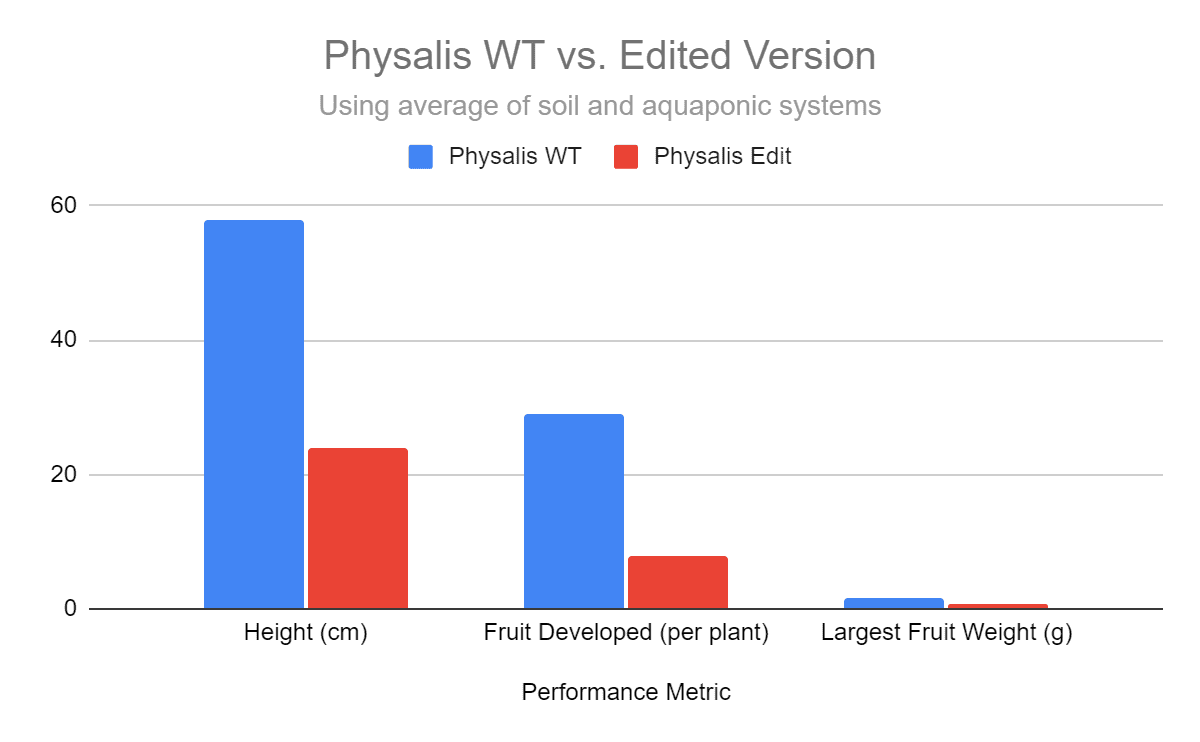
First, the WT Physalis grew about 2.5 times taller and produced 2.5 times more fruit than the compact gene-edited version. The gene-editing did result in more compact plants, however, yields were not maintained (yet!). Some of this loss could be made up by growing more plants of the compact variety closer together, which is important in a greenhouse environment.
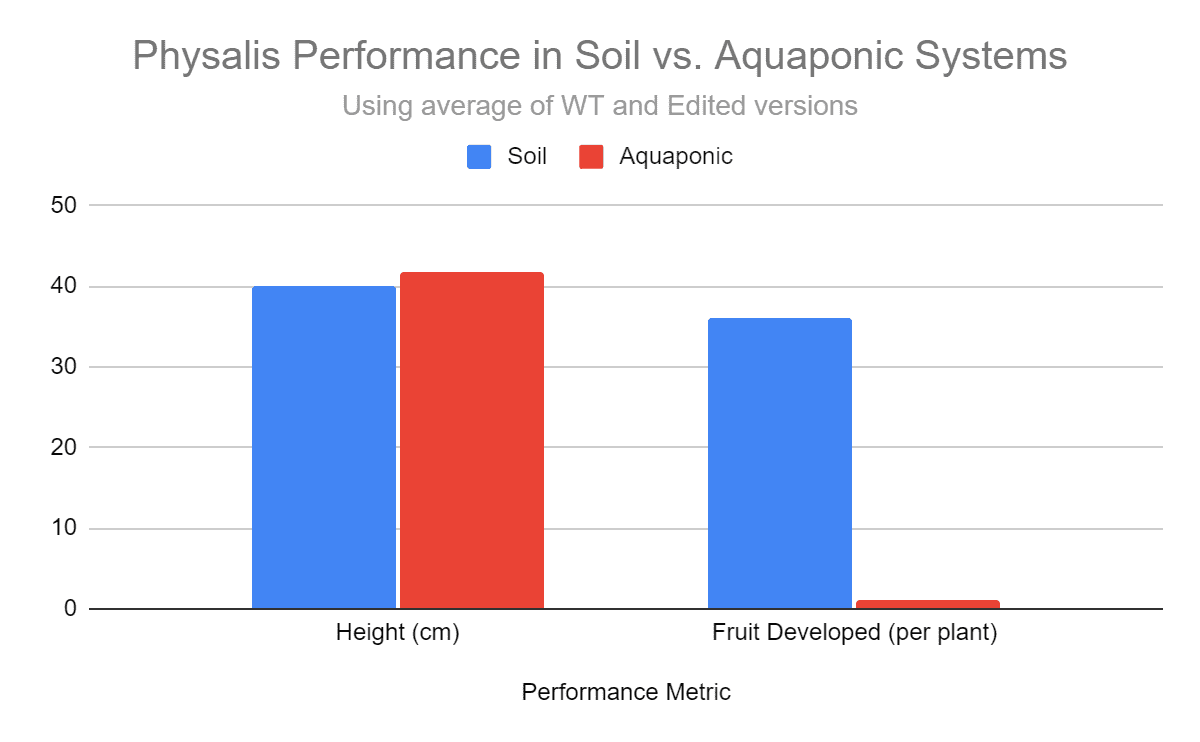
Second, the aquaponic system plants grew to a similar height, but produced less fruit than the soil system. This is likely due to a high pH of 7.0 (required for the fish and bacteria in the system), which makes certain essential nutrients unavailable for plant uptake. Next time, I would decouple (two separate loops) the fish and plant systems then lower pH of, and potentially add supplemental nutrients to, the plant loop.
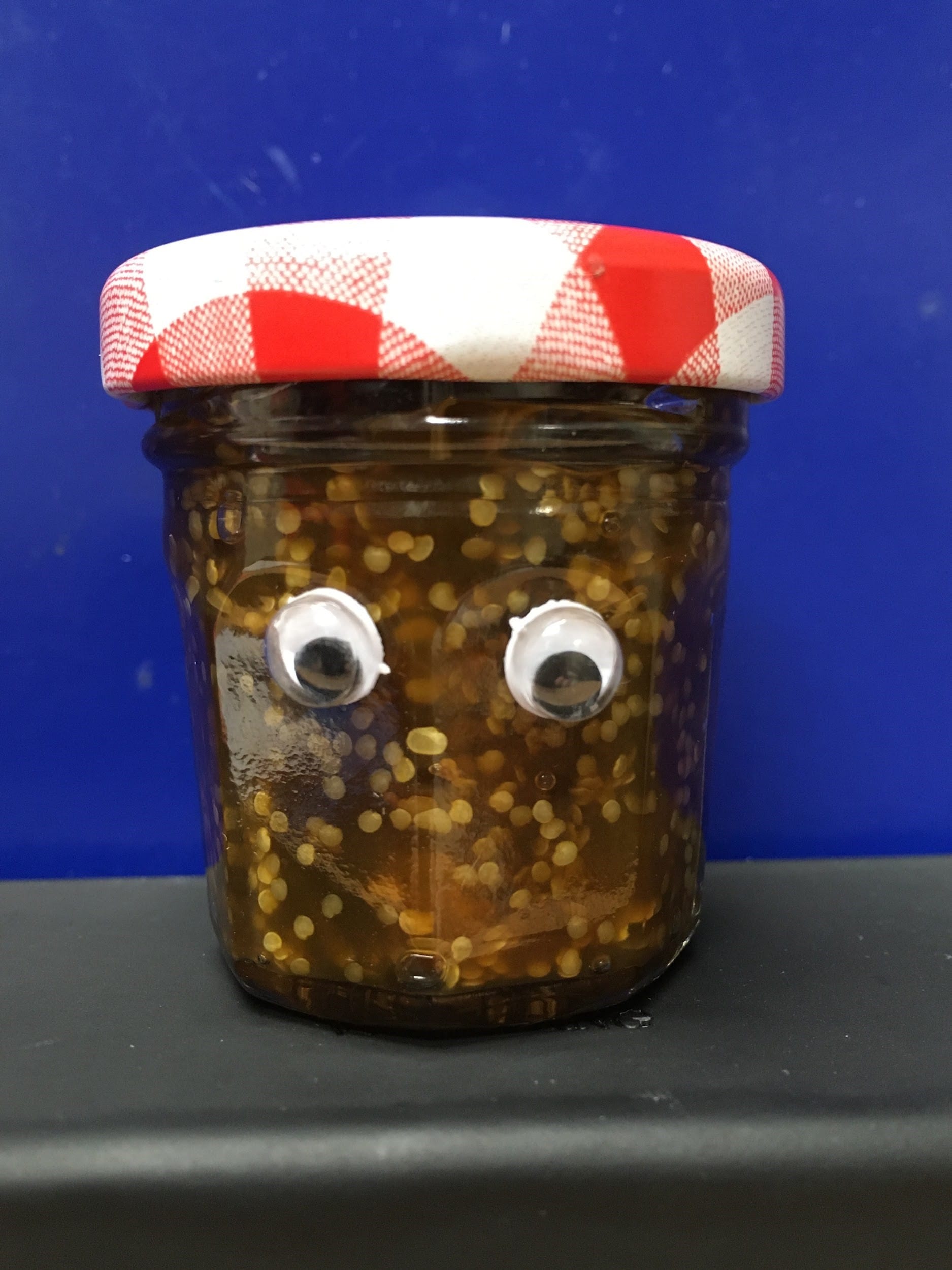
Jar of Physalis jam
Third, Physalis makes excellent groundcherry jam! I simmered about 3 cups of dehusked fruit with 2 tbsp. lemon juice until they all popped (about 30 minutes), then added about ¾ cup brown sugar and kept stirring on low heat until it reached a jam consistency (about 10-30 minutes). By filling some old jars with hot jam, a seal was formed when it cooled, creating a treat that would last the winter! Dehusking takes a while, but is a fun activity to do with friends!
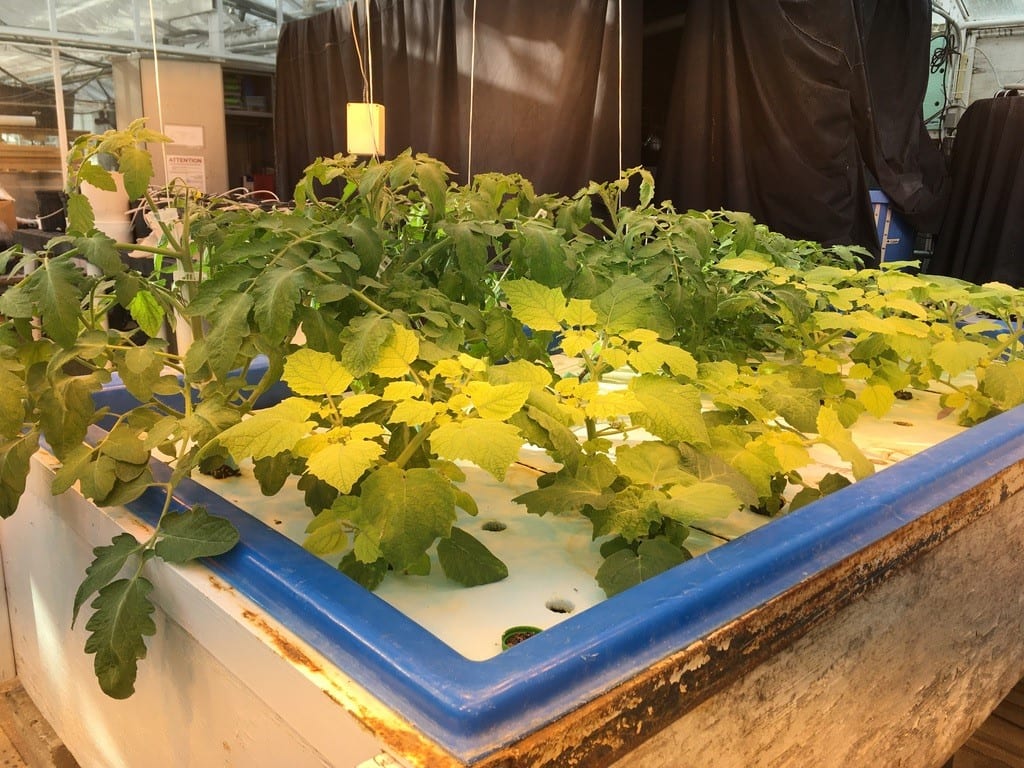
Physalis in aquaponics system
The intersection of gene-editing and aquaponics is just starting to be explored, but holds great promise for the future. The prospect of using gene-editing to create ideal crops for aquaponic and other greenhouse production systems can have lasting positive impacts on environmental sustainability, economic independence, and food security moving forward. Thank you to Dr. Van Eck and Dr. Timmons for their continued support throughout this experiment!
Please feel free to contact Dylan with any comments or questions at dpr77@cornell.edu.
